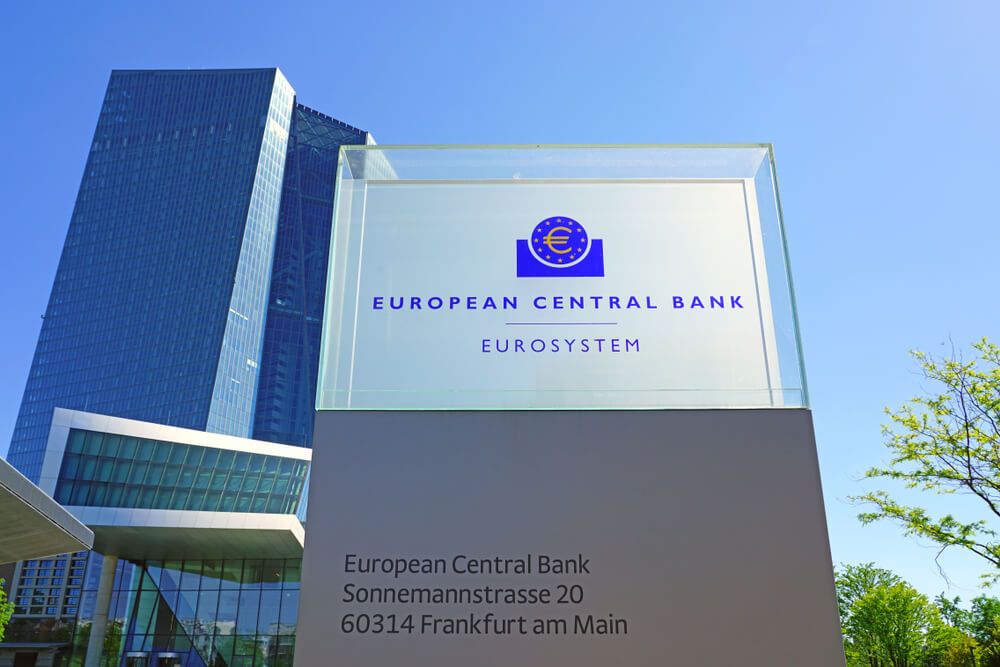ECB preview: Will Lagarde signal the start of rate cuts?
Traders look to the ECB meeting to try and get more insight on when rate cuts could start
The European Central Bank (ECB) is largely expected to keep rates unchanged at its meeting on Thursday. Even though the next move is likely to be lowering interest rates, the setup doesn’t seem right just yet to start cutting, even if inflation continues to fall. Data from Reuters as of Tuesday morning shows that markets are assigning a 93% chance that the deposit rate remains unchanged at 4%.
Source: refinitiv
Consumer prices rose 2.6% in the year to February, slightly higher than the 2.5% anticipated, but a welcome drop from 2.8% in January. Core prices – which exclude volatile elements like food and energy – came in at 3.1% after rising 0.7% in the month, which continues to highlight that inflation is not being driven by external factors and is ingrained in the domestic economy. That said, the data has come a long way in the last 14 months, when inflation peaked above 10% and caused the ECB to tighten monetary policy to levels not seen since the formation of the common block.
The good news is that producer prices have dropped for the third month in a row. Input prices in January were 8.6% lower than where they were a year ago, slightly lower than what markets were anticipating, which can be seen as a good thing. One of the things holding most central banks back when it comes to cutting rates is the fear that inflation is not fully subdued and therefore they could be forced to hike rates again after lowering them. The fact that the price of goods at the start of the production line is dropping steadily would suggest that consumer prices will drop in due course, which could allow the ECB to start signalling when they expect to start cutting rates.
And that is the key to the meeting this week, because not only has the central bank kept rates unchanged for the past few months, but it has also failed to give any forward guidance on how soon it plans to start lowering rates. The vice president Luis de Guindos told Spanish media last week that the bank is not following a calendar, but rather reacting to how data is evolving. Aside from inflation, the labour market remains tight with employment growing in the last quarter and the unemployment rate remaining stable around 6.4% for the last six months. De Guindos’ comments give the impression that the bank may not be ready just yet to give more concise guidance. Futures markets are expecting the first rate cut to come in June.
EUR/USD daily chart
Past performance is not a reliable indicator of future results.
FX traders have been relatively calm over the past week which has caused some consolidation in major pairs. EUR/USD regained bullish momentum on Friday but buyers are once again struggling to push beyond the 50-day SMA (currently at 1.0864) putting further emphasis on the 1.09 mark as upcoming resistance. The playoff between currencies remains tipped in favour of the US dollar as markets view the Federal Reserve as being in a stronger position than the ECB, given the US economy is in much better shape than the European economy. So if markets were to perceive some dovishness from the ECB in the upcoming meeting – especially if it starts to signal rate cuts – then the euro could lose some of the ground it has covered in recent days. The thing is, even if the ECB were to remain hawkish, I’m not sure how much follow-through there would be in the longer term. Markets may perceive the central bank as being stubborn, and not acting in the best way when it comes to preserving economic growth, which could also weigh on the euro. Right now bullish momentum seems to be treading on a fine line.
Meanwhile, equities remain strong despite the minor retracements in the last two days. Risk appetite remains strong as they embrace positive economic data as well as the perception that central banks could start cutting soon. Based on this, the path of least resistance seems to remain higher, but a weaker ECB could give European equities an extra boost this week.
EURO STOXX 50 daily chart
Past performance is not a reliable indicator of future results.